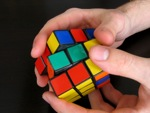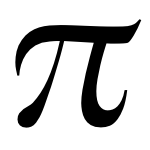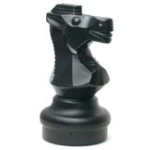 Even though I only started keeping track of timed quizzes back in March, the list already contains over 230 quizzes at this writing!
Even though I only started keeping track of timed quizzes back in March, the list already contains over 230 quizzes at this writing!
As you can see from the Mental Gym page, I've even been working on my own timed quizzes. I've updated the already-existing quizzes so that the clock doesn't start counting down until you start typing. Being based on Javascript, I've also received numerous comments about the ease of simply selecting the option to view the page source to see the answers. In response to this, I've obfuscated the answers within the code itself, so that this method can no longer be used.
In the past few days, I've also added two new timed quizzes. The first concerns the 12 current US Monopoly playing pieces.
The other one is about the impossible contest songs from a classic episode of WKRP In Cincinnati called The Contest Nobody Could Win (full episode). The version of the song I used for the quiz was recorded from the original airing of the episode. For the online Hulu broadcast, as well as the DVD release, the songs (as well as the voices doing the guessing) have been re-dubbed due to royalty issues, so referring to those won't be of much help.
While I'm on the topic of timed quizzes, there are a few that I've wanted to include on the list, but for one reason or another, never really seemed to fit. A good example would be this US states quiz, which didn't fit because it's made for printing out, instead of my focus on playable online timed quizzes.
Even when they're playable online, they don't always fit my other criterion that you must type the answers in, as opposed to just pointing, or dragging and dropping answers. There are some excellent quizzes of this type, including Map Test, and the quizzes from Web Anatomy (which can be timed or not, as you prefer).
My personal favorite of these, though, would have to be Traveler IQ, which can quiz you on all levels of geography, from flags and cities, all the way up to the entire world! They've even added badges you can post on your site.
I hope you enjoy these. As always, if you know of any timed quizzes I've missed, or have any suggestions for the ones on my site, please leave me a note in the comments.




 It was a little over a year ago that I last
It was a little over a year ago that I last 
 While I enjoy many types of puzzles, I grew up as an '80s kid, and will always have a special place in my heart and mind for the now-classic
While I enjoy many types of puzzles, I grew up as an '80s kid, and will always have a special place in my heart and mind for the now-classic  More and more news stories of interest to Grey Matters readers are crossing my desk, so it's probably time to catch you up on the news.
More and more news stories of interest to Grey Matters readers are crossing my desk, so it's probably time to catch you up on the news. It's been a while since I've really talked about magic, and since a number of free magic online resources have become available, it seemed like a good time to come back to it.
It's been a while since I've really talked about magic, and since a number of free magic online resources have become available, it seemed like a good time to come back to it. I started this blog on March 14, to coincide with Pi Day (3/14), and just celebrated my 3rd anniversary back in March. Today, however is another very special anniversary.
I started this blog on March 14, to coincide with Pi Day (3/14), and just celebrated my 3rd anniversary back in March. Today, however is another very special anniversary. Now that you've learned how to
Now that you've learned how to 


